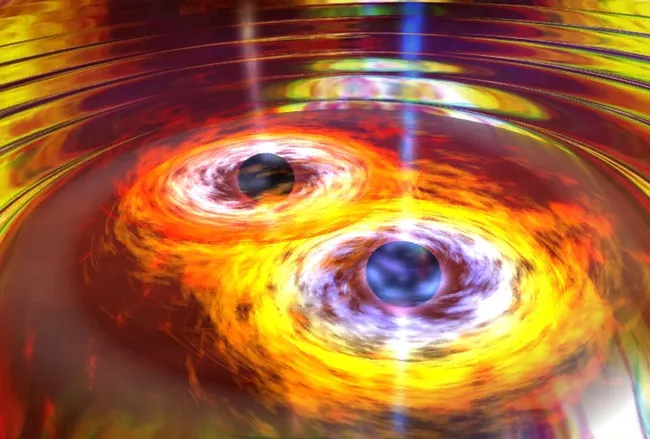In the realm of astrophysics, the detection of gravitational waves stands as one of the most revolutionary breakthroughs, fundamentally altering our understanding of the universe. Initiated by the historic achievement of the Laser Interferometer Gravitational-Wave Observatory (LIGO) in 2015, this field has rapidly evolved, bringing us closer to unraveling the cosmic mysteries of black holes and neutron stars. This article delves into the latest advancements in gravitational wave detection technology and its implications for astronomy.

The Genesis of Gravitational Wave Detection
LIGO’s initial detection of gravitational waves marked a pivotal moment in science, confirming a major prediction of Albert Einstein’s 1915 general relativity theory. According to this theory, massive celestial objects like black holes and neutron stars, when in acceleration, disturb the spacetime fabric, creating ripples known as gravitational waves. These waves travel across the universe at the speed of light, carrying with them information about their origins and the nature of gravity itself.
Despite their theoretical prediction in the early 20th century, Einstein was skeptical about the possibility of detecting these waves due to their incredibly faint nature. Yet, the development of highly sensitive instruments like LIGO, which consists of two massive laser interferometers located in the United States, has made the impossible possible.
How LIGO Detects Gravitational Waves
LIGO’s design is simple yet profoundly effective. Each of its two observatories features an L-shaped interferometer with arms stretching 2.5 miles (4 kilometers). Lasers beam down these arms, and under normal circumstances, their waves align perfectly upon meeting—this is known as constructive interference. However, when a gravitational wave passes through, it distorts space, causing the laser beams to fall out of phase (destructive interference), thereby signaling the passage of a wave.
The precision required for these measurements is astonishing—LIGO detects changes in spacetime smaller than one ten-thousandth the width of a proton. This level of sensitivity allows it to measure cosmic events millions to billions of light-years away with remarkable accuracy.
Advancements and the Future of Gravitational Wave Astronomy
The addition of international partners like Virgo in Italy and KAGRA in Japan has expanded the network, enhancing the ability to pinpoint the origins of gravitational waves. Each observatory’s enhancements and upgrades between observation runs have refined their abilities to detect and analyze the waveforms of these cosmic events.
A recent breakthrough from the University of Minnesota has introduced software capable of alerting astronomers to potential gravitational wave events mere 30 seconds after detection. This rapid alert system is designed to enable follow-up observations using traditional light-based astronomy, which has been successful in only a handful of cases, most notably the binary neutron star merger detected in 2017.
The Importance of Gravitational Wave Alerts
This new software promises to revolutionize how we utilize gravitational waves for astronomical research. By quickly pinpointing the location of a wave’s origin, astronomers can deploy telescopes to observe the event in electromagnetic spectra—something previously possible only a few times. This capability not only aids in verifying the detection of gravitational waves but also provides a multidimensional view of these cataclysmic events, revealing details about the behavior and environment of such exotic objects as black holes and neutron stars.
Understanding these phenomena deepens our knowledge of the universe’s structure, the lifecycle of stars, and the dynamics of galactic evolution. It also tests the limits of general relativity and enhances our ability to use gravitational waves as cosmic probes, exploring regions of space that are otherwise obscured from view.
Conclusion: A New Era in Astronomy
The continual improvement of gravitational wave detection technology heralds a new era in astronomy, one where the invisible becomes observable and distant cosmic events are within our reach. As we stand on the brink of this exciting frontier, the potential for discovery is boundless—each gravitational wave detected not only confirms Einstein’s theories but also opens a new window into the cosmos, offering fresh insights into the most mysterious phenomena of the universe.
Read More-